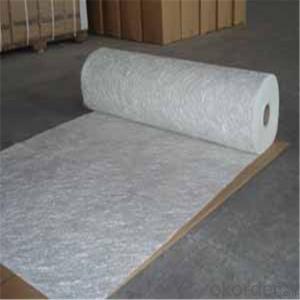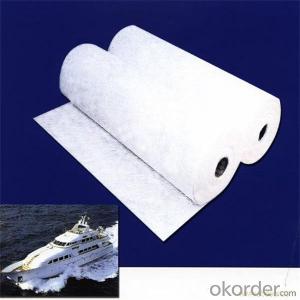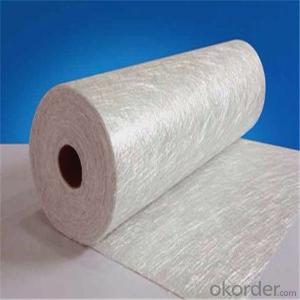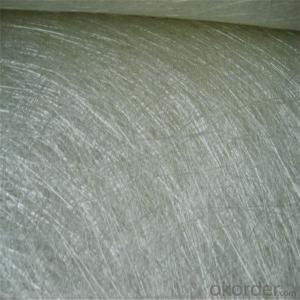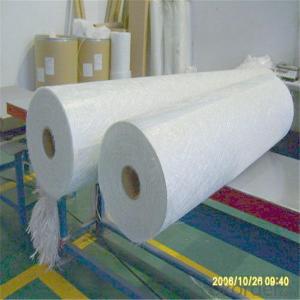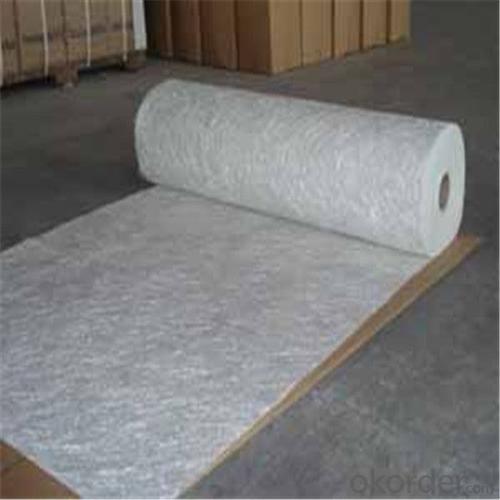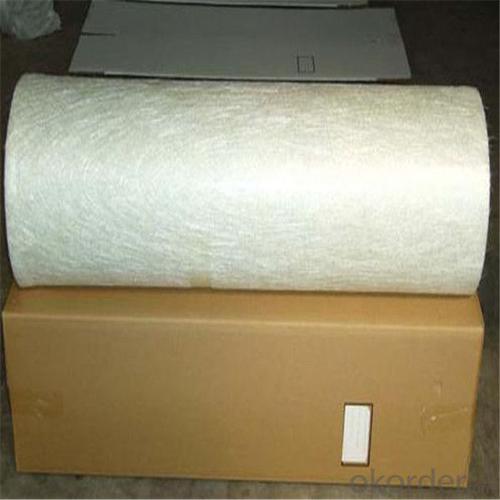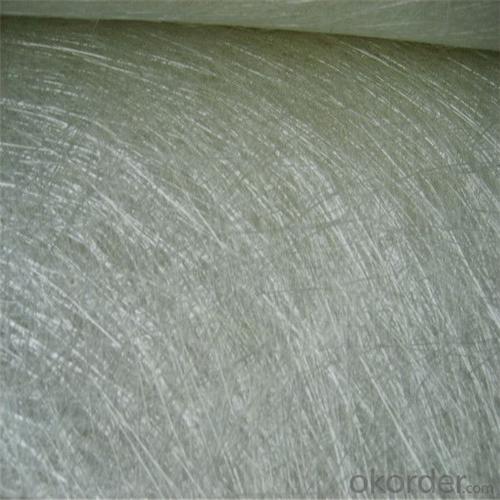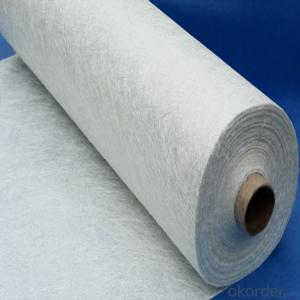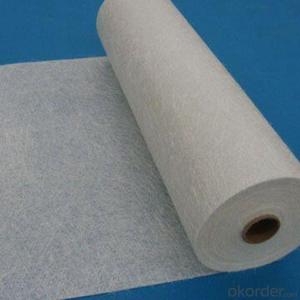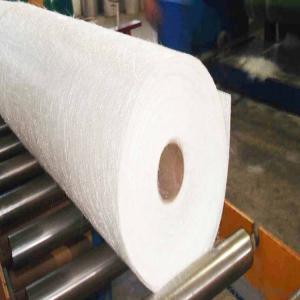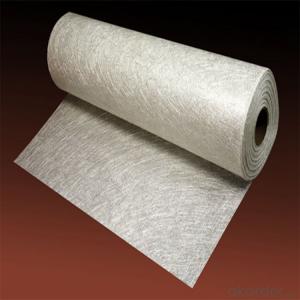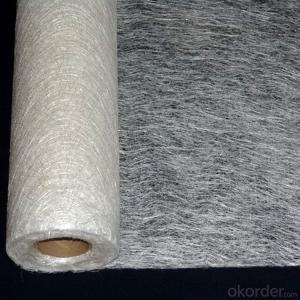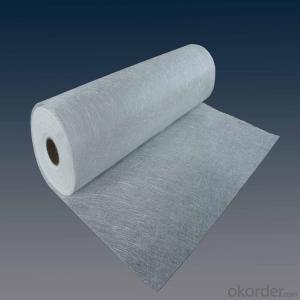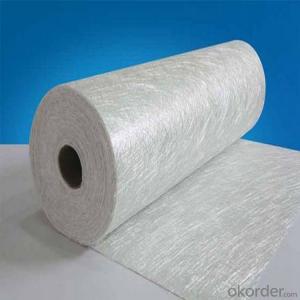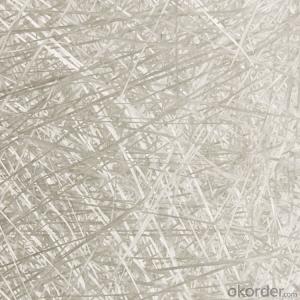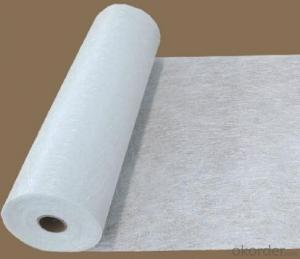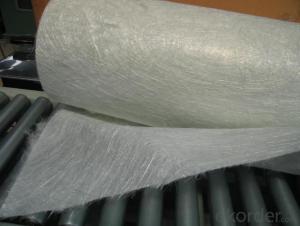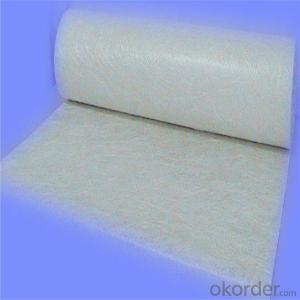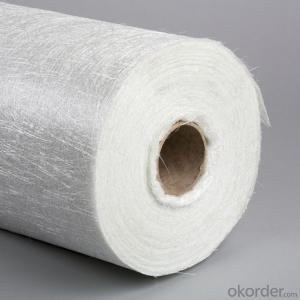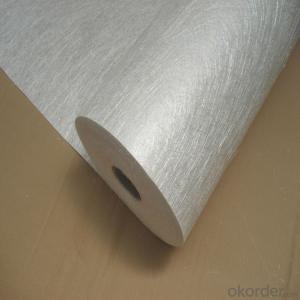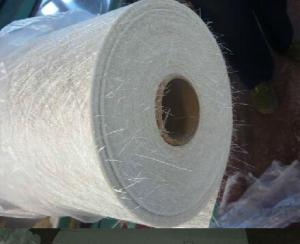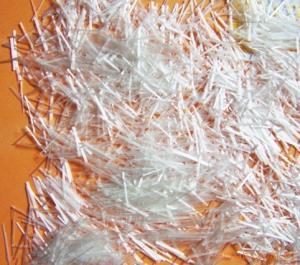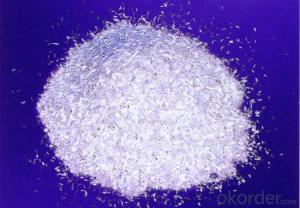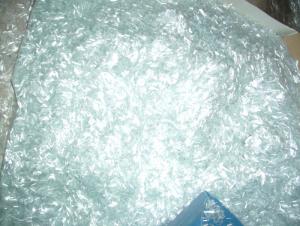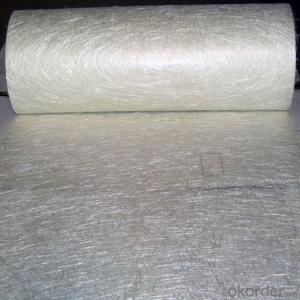Fiberglass Chopped Strand Mat Machine for 2024 1040mm Chopped Strand Mat
- Loading Port:
- Tianjin
- Payment Terms:
- TT OR LC
- Min Order Qty:
- 100 m.t.
- Supply Capability:
- 20000 m.t./month
OKorder Service Pledge
Quality Product, Order Online Tracking, Timely Delivery
OKorder Financial Service
Credit Rating, Credit Services, Credit Purchasing
You Might Also Like
Quick Details
| Technique: | Chopped Strand Fiberglass Mat (CSM) | Dimensions: | 450gsm | Mat Type: | Continuous Filament Mat |
| Fiberglass Type: | E-Glass | Softness: | softness | Place of Origin: | Jiangxi, China (Mainland) |
| Brand Name: | cnbm | Model Number: | 450gsm | color: | white |
| fiberglass type: | E glass | product: | e-glass powder chopped stand mats | binder: | powder or emulsion |
| width: | 1040 or 1270mm, as your requirement | weight: | 30 or 45kg/roll | paper tube diameter: | 90mm |
| outer diameter of roll: | 256mm | packing: | plastic film+carton box + pallet |
Packaging & Delivery
| Packaging Details: | plastic film+carton box + pallet |
| Delivery Detail: | 15-20days |
Specifications
1.e-glass powder chopped stand mats
2.binder:power or emulsion
3.width:1040mm or 1270mm
4.weight:450gsm
Picture
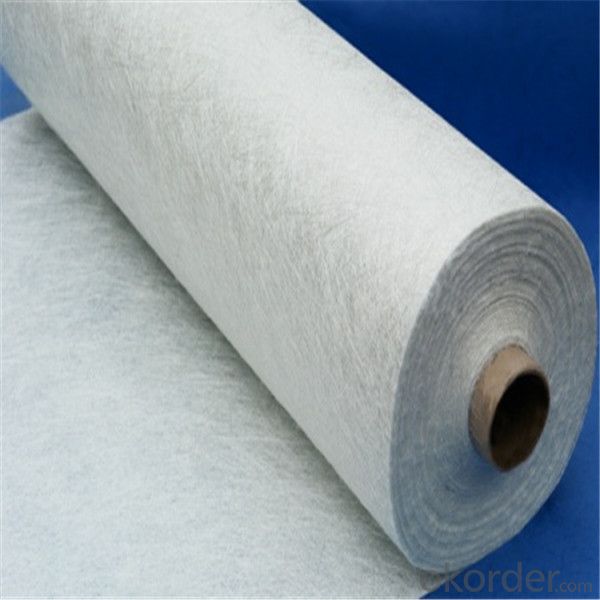

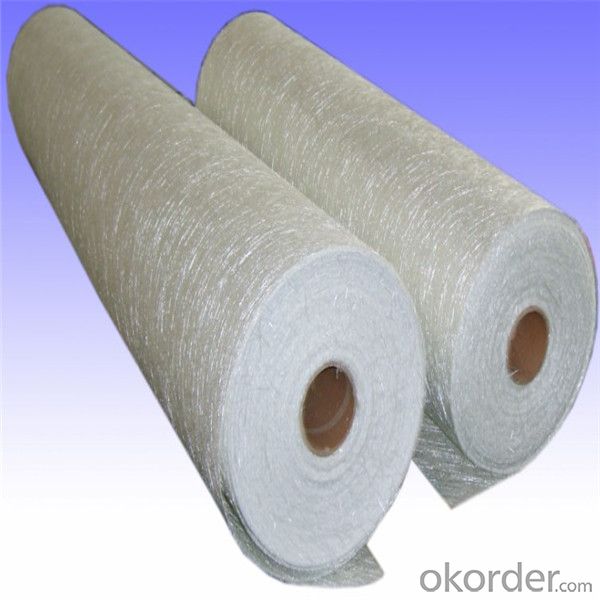

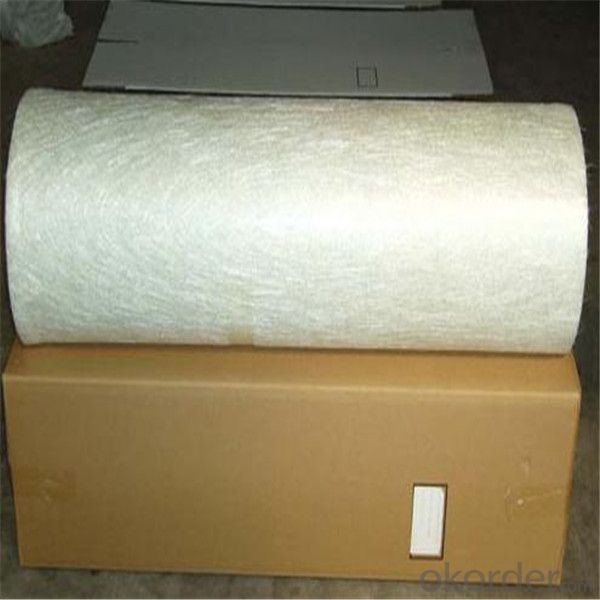
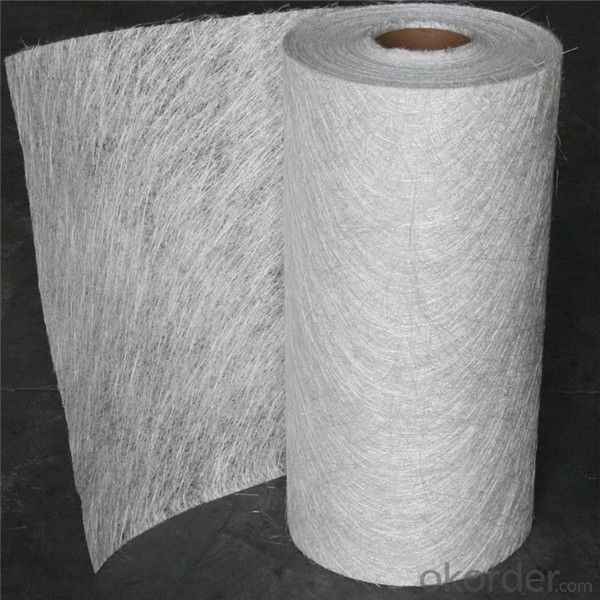
- Q: Can fiberglass chopped strand be used in construction?
- Indeed, construction can make use of fiberglass chopped strand. Fiberglass reinforced polymers have gained popularity in construction due to their impressive strength-to-weight ratio, durability, and resistance to corrosion. Chopped strand is a form of fiberglass that is readily available and finds various applications in construction. By combining it with resins or cementitious materials, composite materials can be formed to create structural components like beams, columns, and panels. It also serves to reinforce concrete, adding strength and preventing cracks. Furthermore, it can be utilized for insulation purposes or as reinforcement in plaster or stucco. In summary, fiberglass chopped strand is a versatile material with numerous advantages in construction, making it a favored choice for various applications.
- Q: Production and process of glass fiber reinforced plastics.
- Nylon is made by the existing PU foaming material as the core material and the rudder; 6) It can realize automation to labor saving; 4) Usually, wet layer tools can be improved for the forming process.10 20, Take down the products, with roving, fiberglass surface felt. In most cases, the curing agent can be used in ambient temperature, unlike RTM aluminum which is smooth on both sides. Glass fiber roving for pultrusion has some effect in the core material. It is generally more brittle after curing: General by using multi-purpose epoxy: This method is usually adopted, because it is not harmful to health.
- Q: Is fiberglass chopped strand suitable for the production of water slides?
- Yes, fiberglass chopped strand is suitable for the production of water slides. Fiberglass is a versatile and durable material that is commonly used in the manufacturing of water slides. It is known for its high strength-to-weight ratio, corrosion resistance, and ability to withstand harsh weather conditions. Fiberglass chopped strand is specifically designed for reinforcement purposes, making it an ideal choice for creating strong and long-lasting water slides that can endure the constant exposure to water, UV rays, and the wear and tear associated with regular use. Additionally, fiberglass can be molded into various shapes and sizes, allowing for the creation of intricate and customized water slide designs. Overall, fiberglass chopped strand offers the necessary properties and performance required for the production of water slides, making it a suitable choice for this application.
- Q: Can fiberglass chopped strand be used in the production of insulation panels?
- Indeed, insulation panels can incorporate fiberglass chopped strand. It is a frequently employed reinforcement material in diverse composite applications, among them insulation panels. The panels benefit from its robustness, endurance, and thermal insulation capabilities. By blending the chopped strands with a binder material, manufacturers employ numerous techniques like compression molding or pultrusion to shape them into panels. Consequently, the resultant insulation panels exhibit outstanding thermal insulation properties, minimal thermal conductivity, and exceptional resistance to heat transfer. Consequently, they prove fitting for an array of applications within the construction and industrial sectors.
- Q: Where can I cut short glass fiber?
- Wellav glass fiber glass fiber to shred section as an example, mainly used for reinforced thermoplastic plastic, such as plastic added to increase strength and toughness, or manufacturing of automotive insulation cotton etc..
- Q: Is fiberglass chopped strand compatible with melamine resin?
- Yes, fiberglass chopped strand is compatible with melamine resin.
- Q: Is fiberglass chopped strand available in different colors?
- Typically, different colors of fiberglass chopped strand are not available. The strands are commonly found in white or off-white hues. Nevertheless, when these chopped strands are combined with a resin or utilized in a composite material, pigments or dyes can be used to achieve the desired color.
- Q: How does the storage condition of fiberglass chopped strand affect its performance?
- How fiberglass chopped strand is stored significantly affects its performance. It is commonly used as a reinforcement material in different applications, including composites and construction materials. Improper storage conditions, such as high humidity or extreme temperatures, can cause the chopped strand to absorb moisture. This moisture absorption can have negative effects on its properties, including a decrease in mechanical strength, dimensional stability, and overall performance. Additionally, it can lead to the degradation of the resin matrix used to bind the chopped strand, resulting in a weaker bond between the reinforcement and the matrix. Aside from moisture absorption, improper storage conditions can also cause the chopped strands to become tangled or clumped together. This can make it challenging to achieve uniform dispersion of the fibers within the matrix during the manufacturing process. As a result, inconsistencies may arise in the mechanical properties of the final product. To ensure optimal performance, it is crucial to store fiberglass chopped strand in a controlled environment with low humidity and stable temperatures. This can be accomplished by storing the material in sealed bags or containers and keeping them in a dry and cool area. It is also advisable to use the chopped strand within a specific timeframe after opening the packaging to minimize moisture absorption. By maintaining appropriate storage conditions, the performance of fiberglass chopped strand can be preserved. This guarantees consistent and dependable outcomes in various applications.
- Q: Can fiberglass chopped strand be used in water treatment applications?
- Yes, fiberglass chopped strand can be used in water treatment applications. Fiberglass is a versatile material that offers excellent resistance to corrosion and chemicals, making it suitable for use in water treatment processes. Chopped strands of fiberglass can be used to reinforce various components such as pipes, tanks, and filters used in water treatment systems. The high strength and durability of fiberglass make it ideal for withstanding the harsh conditions often found in water treatment facilities. Additionally, fiberglass is non-toxic and does not leach harmful substances into the water, ensuring the safety of the treated water.
- Q: Can fiberglass chopped strand be used in water slides?
- Indeed, fiberglass chopped strand finds its utility in water slides. The utilization of fiberglass in water slides is highly favored due to its robustness, longevity, and ability to withstand water-related harm. Chopped strand pertains to the fragmentation of fiberglass into shorter lengths, enabling simpler manipulation and assimilation during the manufacturing process. By amalgamating these chopped strands with resin and other substances, a composite is formed, which is subsequently molded into the desired structure of the water slide. The resultant fiberglass composite exhibits resilience against perpetual water exposure, guarantees structural soundness, and guarantees a seamless and gratifying experience for water slide enthusiasts.
Send your message to us
Fiberglass Chopped Strand Mat Machine for 2024 1040mm Chopped Strand Mat
- Loading Port:
- Tianjin
- Payment Terms:
- TT OR LC
- Min Order Qty:
- 100 m.t.
- Supply Capability:
- 20000 m.t./month
OKorder Service Pledge
Quality Product, Order Online Tracking, Timely Delivery
OKorder Financial Service
Credit Rating, Credit Services, Credit Purchasing
Similar products
Hot products
Hot Searches
Related keywords
